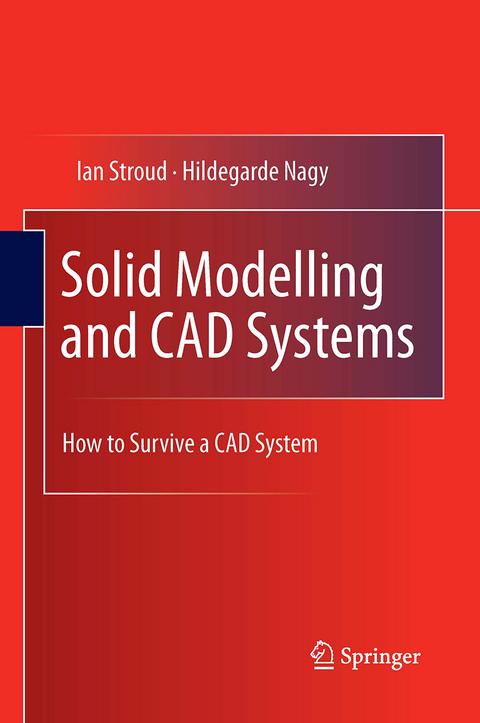
Solid Modelling and CAD Systems
Springer London Ltd (Verlag)
978-1-4471-6902-4 (ISBN)
The main feature of Solid Modelling and CAD Systems is a logical analysis of the techniques and basic solid modelling methods used in modern CAD systems. The book goes on to describe, among other subjects:
two-dimensional shape definition methods,
the command interface and graphics,
databases and data exchange,
early-phase design, and
command files and command structures.
Reading Solid Modelling and CAD Systems will help users understand the limitations of the techniques they are using and will enable practitioners to use CAD systems more efficiently. It is a valuable tool for designers, as well as for advanced undergraduate and postgraduate students. The exercises it contains allow readers to try out different aspects of the subject matter and the book also includes projects that can be used for teaching purposes.
Ian Stroud has worked with solid modelling since 1977 and has a number of unique insights into how CAD systems work, which are shared in this book. Ian Stroud started work in the first research group in boundary representation solid modelling, headed by Ian Braid. He was responsible for developing the first versions of many operations used in CAD systems today. In 1980 he moved to Sweden to continue work on generalising models, an idea of Professor Torsten Kjellberg. Ian Stroud was responsible for making the ideas work and developed many of the data structure elements, the basic techniques and system philosophy behind these. Techniques used in modern systems, such as thickening sheet models, shelling and wire-frame extrusion, originate from him. He has continued to look at different aspects of modelling which will help system users to be more efficient in their work when they eventually arrive in commercial systems. Ian Stroud is also knowledgeable about many other modelling aspects, such as features, which underpin efficient communication between application areas. He also teaches a course on Computer-Aided Engineering for Master's level students for which many of the exercises in this book were developed.
1. Case Studies.- 2. How Objects Are Modelled.- 3. 2D Shape Definition.- 4. Operations and Functionality.- 5. Geometry.- 6. Non-manifold Models.- 7. The CAD Interface and Graphical Output.- 8. Information and Properties.- 9. Databases and Data Exchange.- 10. Features.- 11. Early-Phase Design.- 12. History, Parametric Parts and Programming.- 13. Assemblies.- 14. CAD in a Community.- 15. Projects.
| Erscheinungsdatum | 08.07.2016 |
|---|---|
| Zusatzinfo | XXII, 689 p. |
| Verlagsort | England |
| Sprache | englisch |
| Maße | 155 x 235 mm |
| Themenwelt | Kunst / Musik / Theater ► Design / Innenarchitektur / Mode |
| Informatik ► Grafik / Design ► Digitale Bildverarbeitung | |
| Mathematik / Informatik ► Informatik ► Theorie / Studium | |
| Informatik ► Weitere Themen ► CAD-Programme | |
| Technik ► Maschinenbau | |
| ISBN-10 | 1-4471-6902-6 / 1447169026 |
| ISBN-13 | 978-1-4471-6902-4 / 9781447169024 |
| Zustand | Neuware |
| Informationen gemäß Produktsicherheitsverordnung (GPSR) | |
| Haben Sie eine Frage zum Produkt? |
aus dem Bereich


